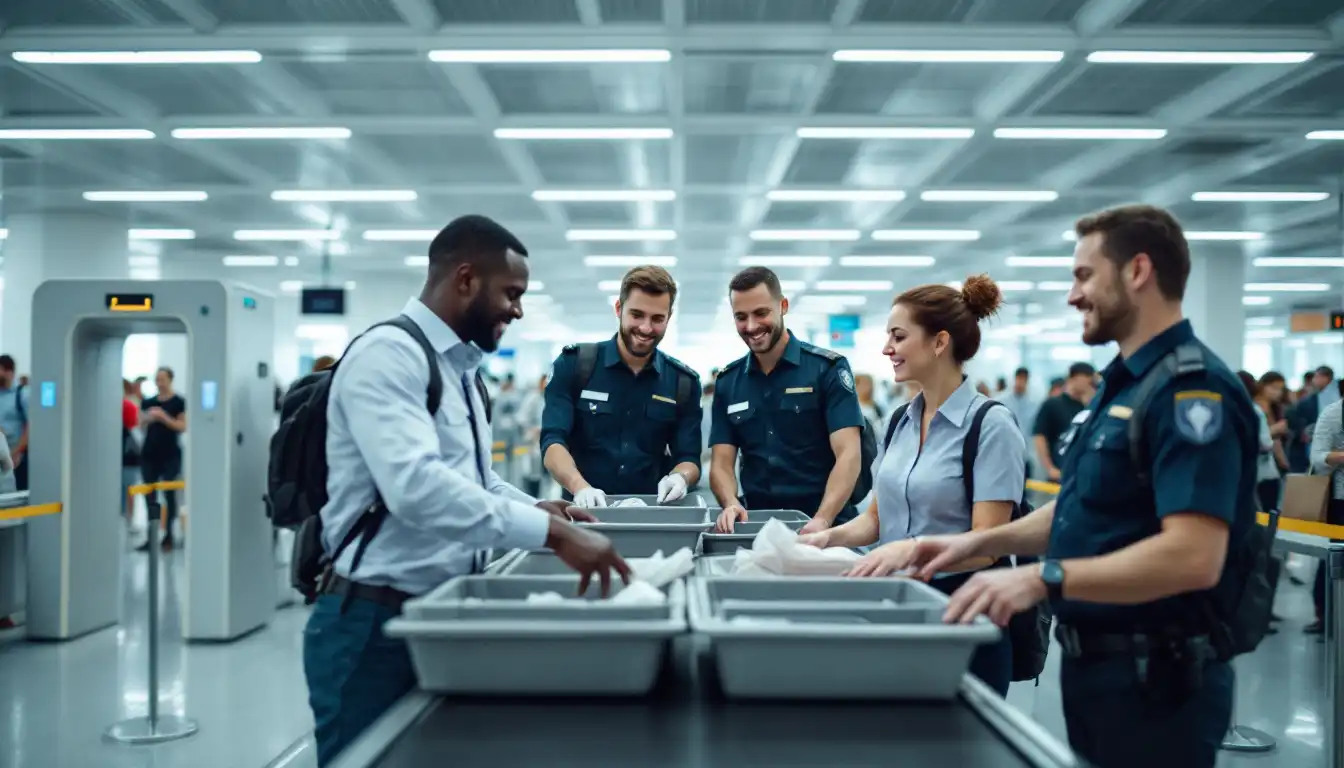Flight security and controls are essential for protecting millions of air travelers every day. As new challenges emerge, these measures constantly evolve. Let’s explore how flight security and controls work to keep you safe, from check-in to touchdown, and why they matter for your journey.
The Evolution of Airport Security Measures
Over the years, airport security has undergone significant transformations to adapt to new challenges. Initially, security checks were minimal, but events like the 9/11 attacks prompted a complete overhaul.
- Early Days: Simple metal detectors and basic baggage scans were standard.
- Post-9/11 Enhancements:
- Introduction of advanced screening technologies.
- Implementation of stringent passenger screening protocols.
- Establishment of the Transportation Security Administration (TSA) in the United States.
These changes aimed to address vulnerabilities and enhance the overall security screening processes.
Flight Security and Controls: Understanding the Sterile Area in Airports
So, what is a sterile area airport? The sterile area refers to the secure zones within an airport where passengers await boarding after passing through security checkpoints. Access is tightly controlled to prevent unauthorized entry of prohibited items or individuals.
Key Features of Sterile Areas:
- Restricted Access: Only ticketed passengers and authorized personnel allowed.
- Continuous Monitoring: Surveillance cameras and patrols keep an eye on activities.
- No Re-entry Without Screening: Once you exit, re-screening is mandatory for re-entry.
These measures ensure the safety of all passengers by maintaining a secure environment free from potential threats.
The Role of Security Personnel and Technology
Airport security isn’t just about machines; it’s also about the dedicated security personnel on the frontline.
Duties of Security Personnel:
- Conducting security checks and passenger screenings.
- Monitoring surveillance systems.
- Responding to security incidents.
Advanced Detection Systems:
Airports employ state-of-the-art detection systems to identify threats:
TechnologyPurposeMetal DetectorsDetect metallic weapons and items.Explosives DetectionIdentify explosive materials in luggage.Body ScannersReveal concealed items on a person’s body.X-ray MachinesScan carry-on and checked baggage.The synergy between skilled personnel and advanced technology forms the backbone of effective flight security and controls.
The Screening Processes: What Passengers Should Expect
Navigating through airport security checkpoints can be a smooth experience when you’re prepared.
Steps in the Screening Process:
- ID and Boarding Pass Verification: Present valid identification and your boarding pass.
- Baggage Screening: Place carry-on items on the conveyor belt for X-ray scanning.
- Personal Screening:
- Walk through a metal detector or body scanner.
- Remove shoes, belts, and jackets if required.
- Additional Checks:
- Random checks for explosives residue.
- Secondary screening if anomalies are detected.
Tips for a Hassle-Free Screening:
- Pack liquids according to the 3-1-1 rule.
- Keep electronics accessible for easy removal.
- Be aware of prohibited items to avoid delays.
For more detailed travel tips, check out our Ultimate Guide to Packing for a Trip.
Behind the Scenes: Agencies Ensuring Air Travel Safety
Several organizations work tirelessly to maintain the integrity of civil aviation security.
Key Agencies:
- Transportation Security Administration (TSA):
- Oversees security in all modes of transportation in the U.S.
- Implements policies for screening and security measures.
- Federal Aviation Administration (FAA):
- Regulates all aspects of civil aviation.
- Establishes safety standards for aircraft operations.
- Law Enforcement Partners:
- Collaborate to address threats and enforce laws.
- Provide a rapid response to security incidents.
These entities coordinate to create a multi-layered defense system against threats.
Staying Informed and Prepared as a Traveler
Awareness is a passenger’s best tool for contributing to a secure travel environment.
Staying Updated:
- Review the TSA’s Prohibited Items List regularly.
- Enroll in programs like TSA PreCheck for expedited screening.
- Check for travel advisories related to potential threats.
For those traveling with families, our article on the Best International Travel with Kids offers insights on making your journey smoother.
Conclusion: Your Role in Flight Security and Controls
Understanding what airport security is called and how it functions empowers you to navigate the system confidently. By staying informed and compliant with security procedures, you not only expedite your journey but also play a part in the collective effort to keep skies safe.
Ready to embark on your next adventure? Ensure you’re prepared by visiting our guide on Travel Tips for Business Travelers. Safe travels!
For further reading on aviation security, consider exploring the International Civil Aviation Organization (ICAO) website and the Federal Aviation Administration (FAA)
